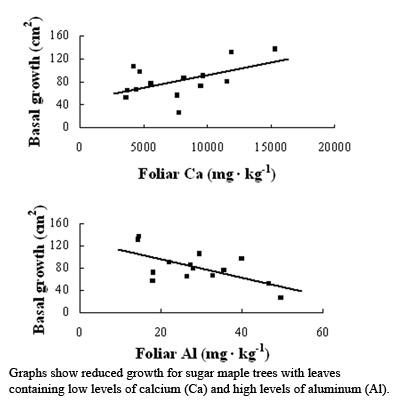Project Overview

To assess the role of site nutrition in sugar maple decline, NSRC researchers evaluated soil and foliar nutrients and tree diameter growth and crown health of sugar maple trees in 14 forest stands in Vermont. The stands represented a range in calcium availability based on bedrock geology. Of all the nutrients tested, only calcium and aluminum appeared to be directly linked to tree growth and health. Healthier stands had higher levels of soil calcium. Trees with more branch dieback had low foliar calcium and high foliar aluminum. Average annual tree growth during the decade prior to testing was lower for trees in stands with low foliar calcium and high foliar aluminum. Although the 14 stands differed widely in average tree age, site history, and site characteristics such as elevation and drainage, relationships of foliar calcium and aluminum to stand growth and health were consistent.
Objectives
To assess the role of site nutrition in sugar maple decline
Dataset Availability
There are no datasets associated with this project
Tags
Status - Completed
Start date: 2001-01-01
End date: 2006-03-31
Study Area

